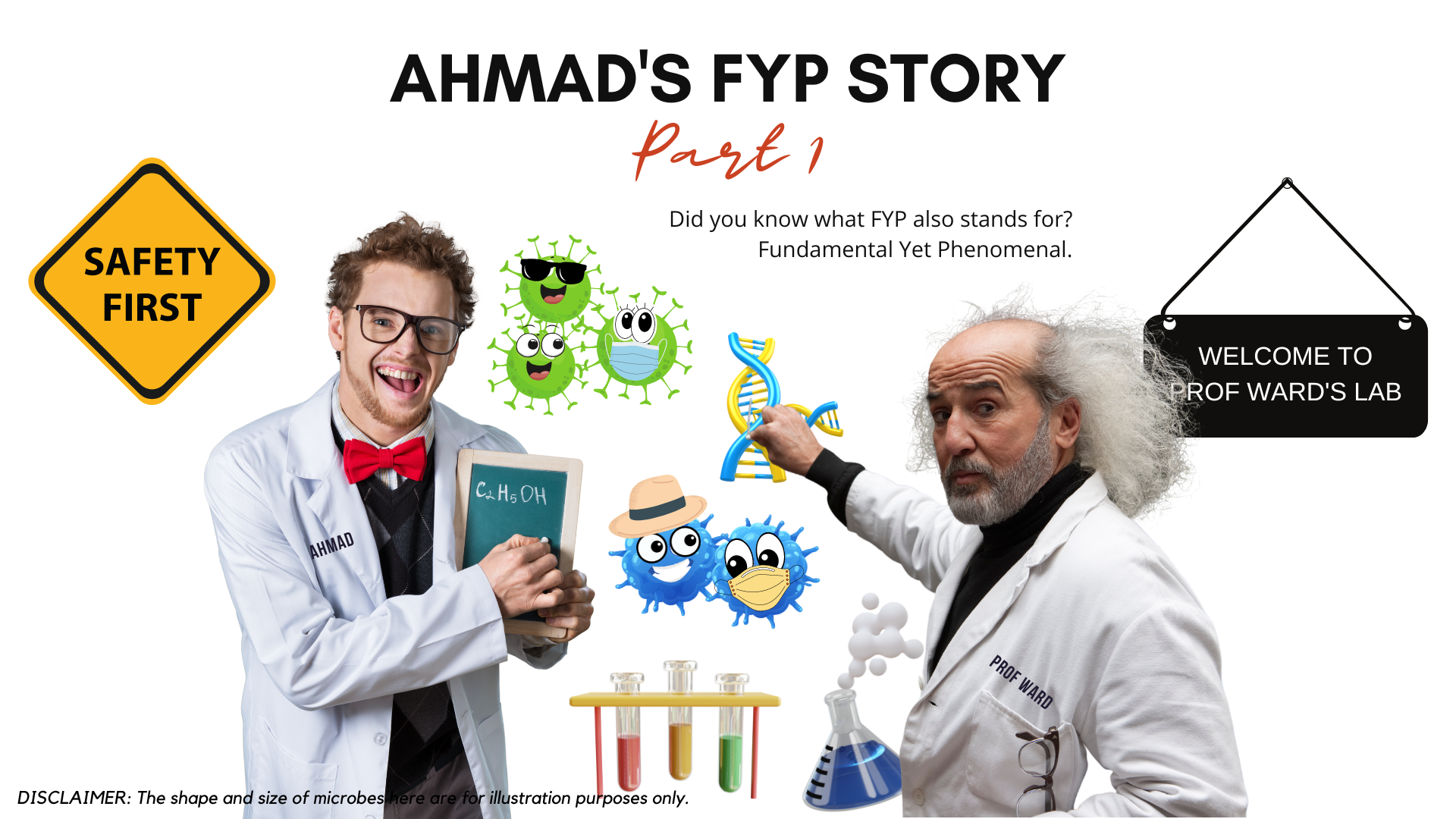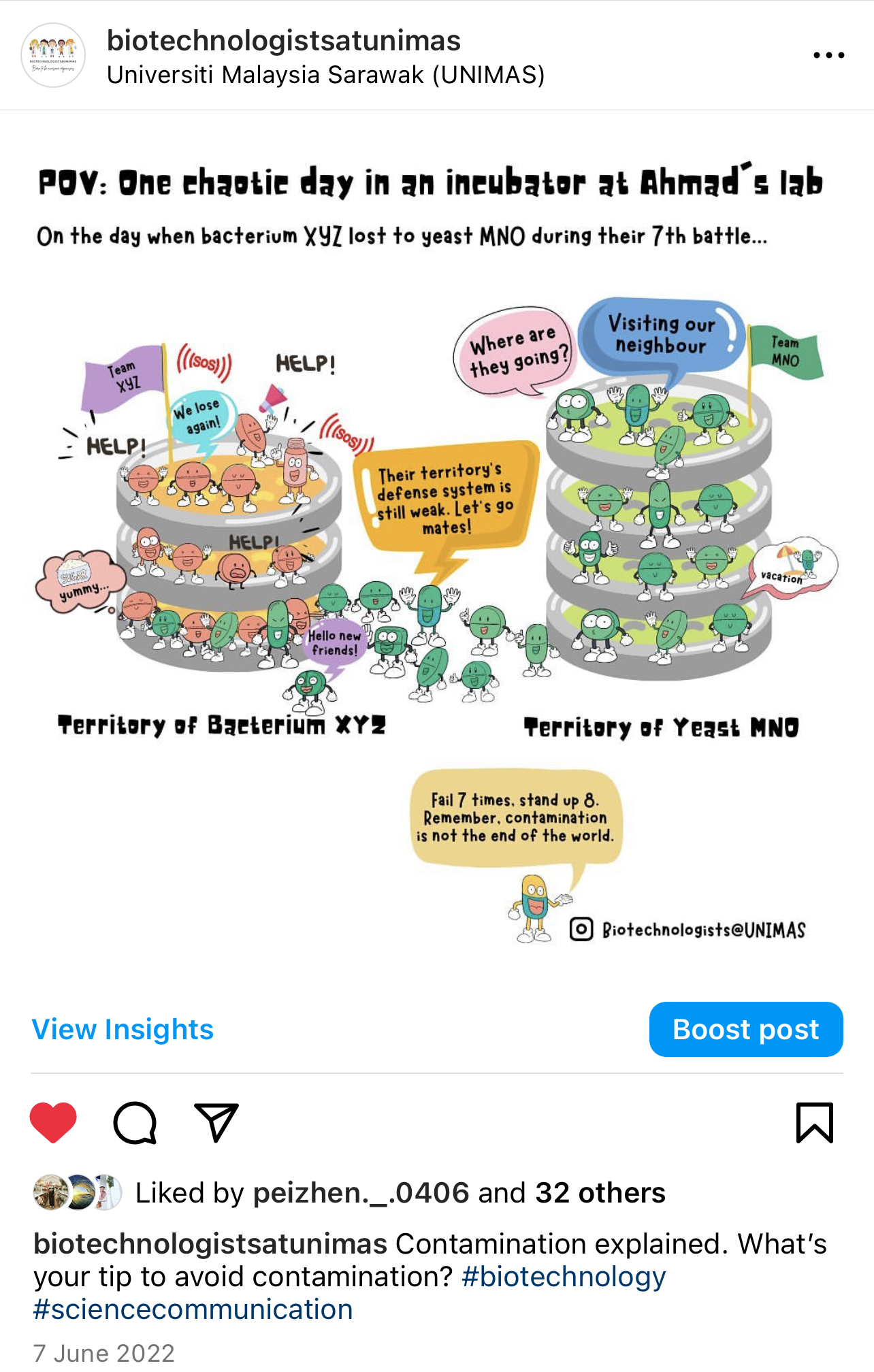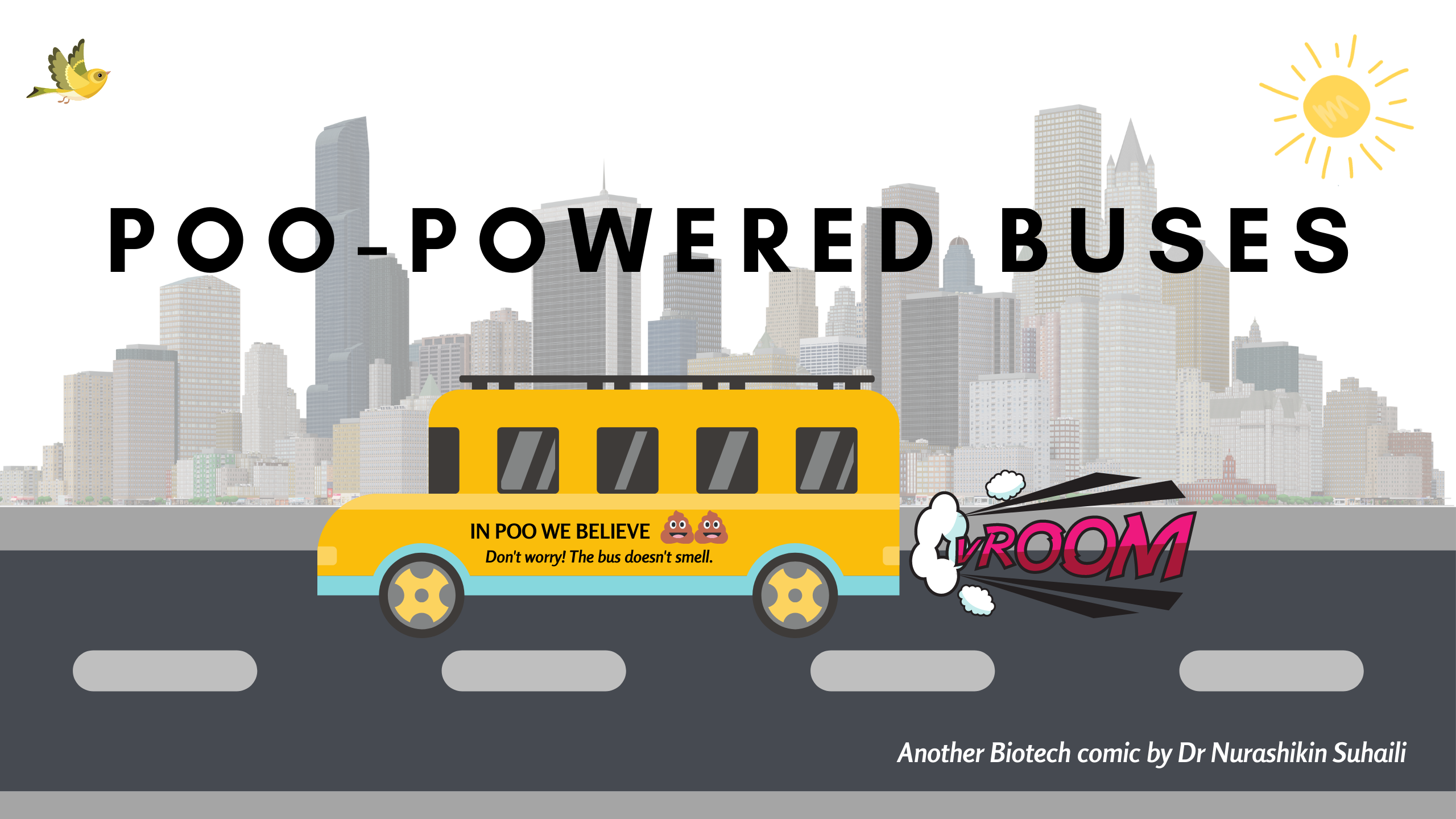
.png)
Science communication has often struggled to engage the public, particularly in complex fields like biotechnology. Recognising this gap, one educator took a novel approach by using comics to communicate biotech concepts in a fun and accessible manner. Through the power of storytelling and visual elements, these biotech comics have successfully bridged the gap between scientific advancements and public understanding. By reaching a wide audience through social media and physical displays, these comics have sparked curiosity, transformed perceptions, and inspired a love for science in individuals of all ages. With plans to expand their reach, the future holds a promising blend of entertainment and education, breaking down barriers and fostering greater awareness of the exciting world of biotechnology.
Discover how Dr. Nurashikin Suhaili from the Faculty of Resource Science and Technology (FRST), is actively working to advocate the belief that science can be a delightful experience and that learning can seamlessly integrate into leisure activities.
MOTIVATION: FILLING THE GAP IN SCIENCE COMMUNICATION
The world of science, particularly biotechnology, has witnessed significant advancements in recent years. However, the translation of these scientific breakthroughs to the public has often been lacking, especially on social media where information is rapidly shared and consumed. My motivation stemmed from the realisation that science communication needed a fresh approach to engage and captivate audiences. I recognised the importance of creating an avenue for learning that could seamlessly integrate into people’s leisure time, sparking curiosity and interest in biotechnology.
IMPLEMENTATION: BIOTECH COMICS TO THE RESCUE
To bring my vision to life, I created a series of biotech comics, each carefully crafted to convey scientific concepts in an engaging and relatable manner. Some of the comics I produced include “Ahmad’s FYP Story,” “Poo-Powered Buses,” and “The Most Electrifying Biotech Story.” These comics incorporated bite-sized concepts, storytelling techniques, and elements of critical thinking to simplify complex ideas. I used these comics as supporting materials for my courses, Bioprocess Technology and Environmental Biotechnology.
Comics, as flexible learning material, offer a versatile approach to education. Beyond their applications in the classroom, they can be easily posted and shared across various platforms, reaching a broader audience.

In my efforts to disseminate biotech comics, I utilised social media platforms such as Instagram and TikTok through the page Biotechnologists at UNIMAS. By harnessing the power of these digital platforms, I was able to amplify the reach of the comics, engaging and educating a diverse range of individuals.

In addition to online platforms, I extended the visibility of the comics through physical means. I posted them on the notice board at the faculty, ensuring that students and faculty members alike could access and enjoy them. Furthermore, the comics were displayed on the television screens in the faculty lobby, allowing passersby to encounter and engage with the educational content. By utilising both digital and physical channels, I aimed to maximise the dissemination of the comics, making them readily available to a wide audience. Whether through online platforms or physical displays, the comics served as accessible and engaging resources, fostering a greater awareness and understanding of biotechnology among a diverse range of individuals.


PERCEPTION FROM STUDENTS
The response to the implementation of comics in teaching biotechnology has been overwhelmingly positive. Students have provided feedback that highlights the efficacy of comics as a teaching and learning tool. The visual storytelling aspect has helped them grasp and retain complex concepts more effectively. This is evident through the notable improvement observed in students’ scores on both pre and post-tests. In a recent survey conducted among final-year biotechnology students enrolled in the aforementioned courses, unanimous agreement was expressed by all respondents regarding the application of comics in future biotechnology courses. Furthermore, an overwhelming 97.7% of the participants acknowledged that the incorporation of comics in teaching and learning had significantly transformed their perception, illustrating that biotechnology and science as a whole can be approached in a more accessible and relaxed manner.

WAY TO GO
Looking ahead, my aim is to expand the scope of biotech comics and promote science communication even further. I envision a future where these comics reach mass media platforms, allowing more people to learn about biotechnology in a casual and enjoyable way. By educating the public through comics on social and mass media, we can bridge the gap between science and society and raise awareness among younger generations about the importance of STEM.
As a biotech educator, I firmly believe that my role extends beyond the classroom. Science comics serve as lifelong learning materials, both in formal and informal contexts. By continuing to create and promote biotech comics, I hope to inspire a sense of wonder, curiosity, and appreciation for science in individuals of all ages.
Written by Dr Nurashikin Suhaili
Edited by Nurul Huzaimah Hussien